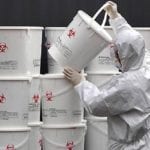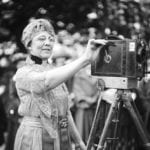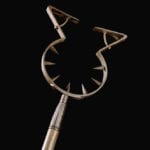 Technology
Technology  Technology
Technology  Humans
Humans 10 Everyday Human Behaviors That Are Actually Survival Instincts
 Animals
Animals 10 Animals That Humiliated and Harmed Historical Leaders
 History
History 10 Most Influential Protests in Modern History
 Creepy
Creepy 10 More Representations of Death from Myth, Legend, and Folktale
 Technology
Technology 10 Scientific Breakthroughs of 2025 That’ll Change Everything
 Our World
Our World 10 Ways Icelandic Culture Makes Other Countries Look Boring
 Misconceptions
Misconceptions 10 Common Misconceptions About the Victorian Era
 Mysteries
Mysteries 10 Strange Unexplained Mysteries of 2025
 Miscellaneous
Miscellaneous 10 of History’s Most Bell-Ringing Finishing Moves
 Technology
Technology Top 10 Everyday Tech Buzzwords That Hide a Darker Past
 Humans
Humans 10 Everyday Human Behaviors That Are Actually Survival Instincts
 Animals
Animals 10 Animals That Humiliated and Harmed Historical Leaders
Who's Behind Listverse?

Jamie Frater
Head Editor
Jamie founded Listverse due to an insatiable desire to share fascinating, obscure, and bizarre facts. He has been a guest speaker on numerous national radio and television stations and is a five time published author.
More About Us History
History 10 Most Influential Protests in Modern History
 Creepy
Creepy 10 More Representations of Death from Myth, Legend, and Folktale
 Technology
Technology 10 Scientific Breakthroughs of 2025 That’ll Change Everything
 Our World
Our World 10 Ways Icelandic Culture Makes Other Countries Look Boring
 Misconceptions
Misconceptions 10 Common Misconceptions About the Victorian Era
 Mysteries
Mysteries 10 Strange Unexplained Mysteries of 2025
 Miscellaneous
Miscellaneous 10 of History’s Most Bell-Ringing Finishing Moves
10 Crazy Facts No One Ever Told You About The First Moon Landing
Apollo 11 was the first spaceflight to land a man on the Moon. The crew included Neil Armstrong and Edwin “Buzz” Aldrin, who became the first men to walk on the Moon. These are everyday facts.
However, there are crazier facts that no one ever told us about Apollo 11. Like the bureaucratic red tape that the crewmen had to go through to bring Moon rocks back to Earth and Neil Armstrong’s action on the Moon that might annoy today’s environmentalists. Read on to find out about these surprising facts . . . and many more.
10 The Crew Filled Out US Customs Forms On Their Return
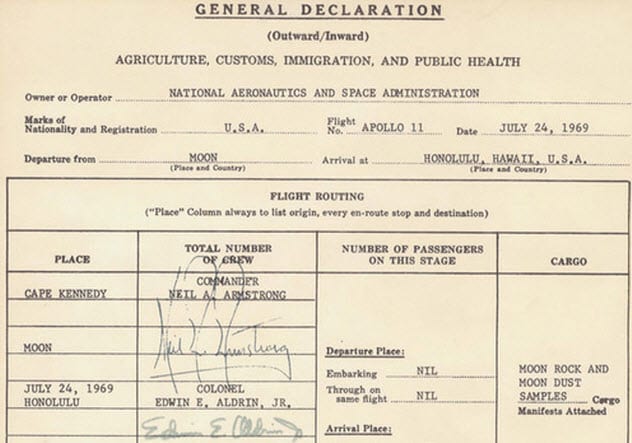
US Customs made the Apollo 11 astronauts—Neil Armstrong, Buzz Aldrin, and Michael Collins—fill out a form for importing Moon rocks and dust into the United States on July 24, 1969, the same day they landed in the Pacific Ocean around Hawaii. The flight route was listed as Cape Kennedy, Florida, to the Moon and finally to Honolulu, Hawaii.
The Apollo 11 crew declared their cargo as “Moon rock and Moon dust samples.” Customs could not determine whether the astronauts had any illnesses, so the section that was supposed to list any possible diseases simply said “to be determined.”[1]
9 Neil Armstrong Dropped Trash On The Moon
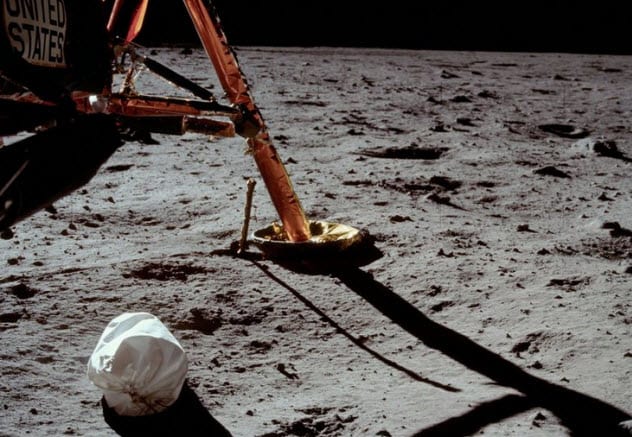
Buzz Aldrin and Neil Armstrong remained inside the lunar module for several minutes after landing on the Moon. During that time, Aldrin passed a bag of trash filled with food wrappers and containers of poop to Armstrong, who dropped it on the Moon surface when he alighted from the lunar module. The first picture he took of the Moon clearly shows the bag of trash.[2]
The astronauts dropped more trash and tools to create luggage space for the rocks and dust they took from the Moon. Many of the tools were still functional, and some were even crucial to the success of the expedition. They included scales, hammers, and a laser reflector that was used to measure the distance between the Earth and the Moon.
The two men also left the descent stage of the lunar module that was only useful for landing. In fact, they added a plaque and turned it into a landmark. The plaque reads: “Here men from the planet Earth first set foot upon the Moon. July 1969, A.D. We came in peace for all mankind.” The trash, tools, and part of the lunar module are still on the Moon.
8 President Nixon Prepared A Speech In Case The Astronauts Could Not Return
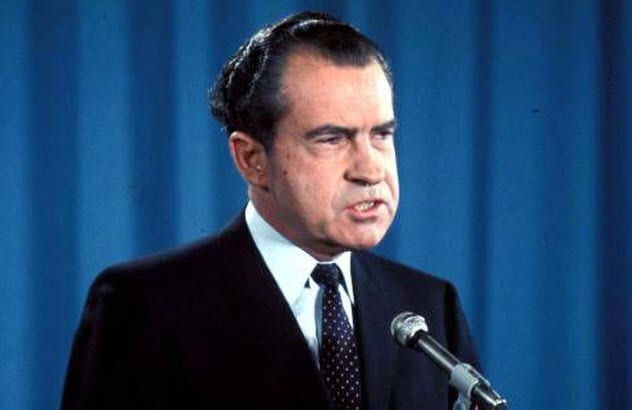
President Richard Nixon had a speech prepared in case the Apollo 11 crew never returned—specifically, if Neil Armstrong and Buzz Aldrin got stuck on the Moon. NASA had confidence in the Apollo 11 spacecraft but not in the lunar module.
NASA feared that the lunar module could fail to take off or malfunction midway and crash on the Moon. They were also concerned that it might not reattach itself to the command module that would return it and the crew to Earth. Depending on what happened, the men could die instantly, starve to death, or commit suicide.
The speech was NASA’s idea. It was passed to Nixon’s speechwriter, William Safire, through Frank Borman, an astronaut and NASA’s liaison to the White House, one month before Armstrong and Aldrin walked on the Moon. They were still on Earth at the time. Safire wrote the speech himself.
Before reading the speech, Nixon would have contacted the wives of the astronauts and informed them of the situation. Then he would have addressed the nation and begun his speech with the line: “Fate has ordained that the men who went to the Moon to explore in peace will stay on the Moon to rest in peace.”[3]
7 There Is Only One Full-Body Picture Of Neil Armstrong Walking On The Moon
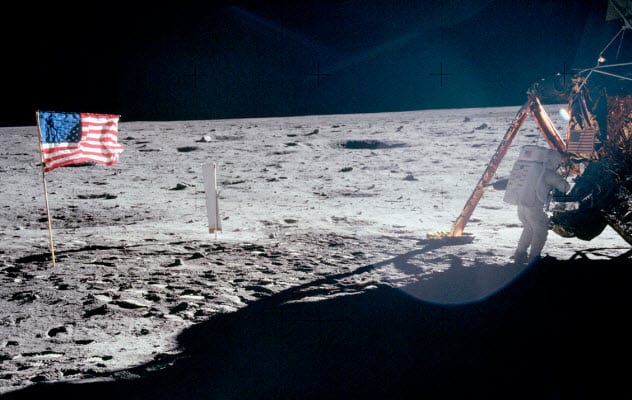
Neil Armstrong is the face of the Apollo 11 Moon landing. However, most of the pictures taken during the expedition were of Buzz Aldrin. Armstrong was the one handling the main camera, and he used it to take pictures of Aldrin. Aldrin also had a camera, but he was told to shoot other things.
The best picture we have of Neil Armstrong does not show him clearly. He was doing something by the lunar module with his back to the camera. The US flag was on the far left. He and the lunar module were on the far right. There is no picture of Armstrong’s face as he walked on the Moon.
However, Armstrong did appear in a photograph that he took of Buzz Aldrin. Armstrong’s reflection was visible on Aldrin’s visor.[4]
6 The Third Apollo Astronaut Never Landed Or Walked On The Moon
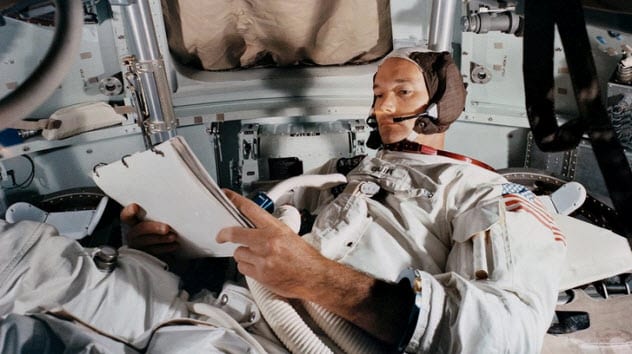
We mentioned earlier that President Nixon had a speech prepared in case Neil Armstrong and Buzz Aldrin’s lunar module crashed or failed to take off or reattach itself to the command module for the return trip to Earth. The command module was orbiting the Moon while the lunar module was on the Moon.
Inside the command module was Michael Collins, the third astronaut. Collins did not land on the Moon because someone had to control the command module. While Armstrong and Aldrin took pictures, dumped litter, and gathered soil and rock samples, Collins took pictures of the Moon.
He remained inside the command module alone for over 20 hours. He would have returned to Earth by himself if Aldrin and Armstrong had gotten stuck on the Moon. That’s why his name was missing from the speech that would have informed the world about the deaths of Aldrin and Armstrong.
The possibility of leaving the other astronauts on the Moon weighed heavily on Collins. In fact, he had been concerned about it for at least six months. While orbiting the Moon, he wrote that it would haunt him for the rest of his life if it happened.[5]
5 Neil Armstrong Said That His Famous Quote Was Misquoted
Did Neil Armstrong say, “That’s one small step for man, one giant leap for mankind” or “That’s one small step for a man, one giant leap for mankind”?
The difference between both is the presence of “a” between “for” and “man.” We generally use the quote without an “a” even though Armstrong insisted that he added an “a.” The presence or absence of “a” changes the meaning of the quote. “Man” refers to humanity without the “a” and to Neil Armstrong with the “a.”
The silence of the “a” has been blamed on the noisy radio and Armstrong’s North American Midwest accent. People with this accent usually shorten their “a” and pronounce it with the word preceding it. So Armstrong would have pronounced his “a” with “for.”
Some US researchers conducted an experiment into the North American Midwest accent. They discovered that listeners would often have problems differentiating between “for” and “for a” even when the audio was slowed.[6]
4 The Maker Of The US Flag Planted On The Moon Is Disputed
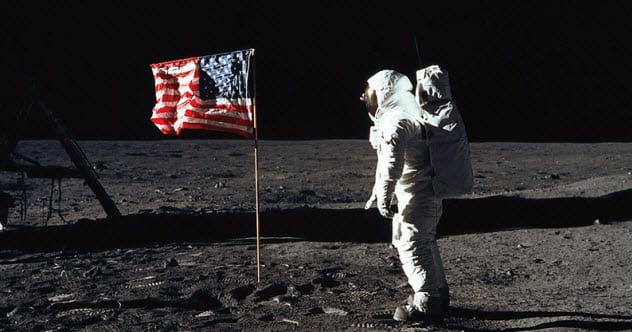
Two businesses claim to be the maker of the US flag that Neil Armstrong and Buzz Aldrin planted on the Moon. Two more companies claim to have supplied both businesses with the nylon fabric used for the flag. NASA itself isn’t talking—that is, if it knows the truth.
NASA once hinted but has not confirmed that it purchased the flag from Sears. In that case, the flag would have been made by Annin, which supplied US flags to Sears at the time. However, NASA engineer Jack Kinzler wrote that the flag was purchased from a government catalog. If that is true, it would have been from Valley Forge, which supplied the government.
At the time, Annin and Valley Forge are believed to have sourced the nylon fabric for their flags from Burlington Industrial Fabrics’ Plant Number 2 in Rhodhiss, North Carolina. However, textile company Glen Raven claims that it supplied nylon fabric from its Burnsville plant to Annin and Valley Forge at the time.[7]
3 The Crew Could Not Get Life Insurance, But They Found A Way Around It
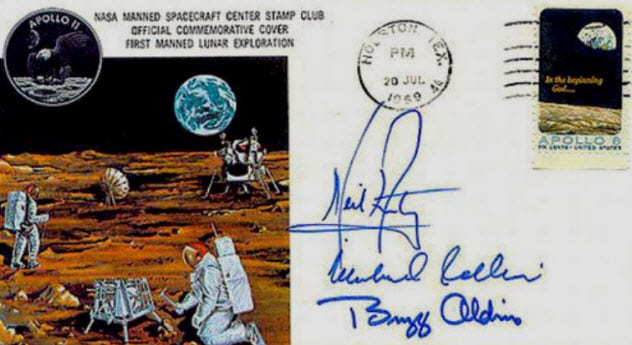
As we mentioned earlier, the crew of Apollo 11 faced the possibility that they might not return from the Moon. The astronauts would have taken out life insurance, but it would have been unbelievably expensive. So, the crew of Apollo 11 signed autographs that their families could sell after their deaths.
The Apollo 11 astronauts were famous long before they left Earth. They had lots of fans who requested autographs. In fact, the crew signed thousands of autographs after their mission, which some of their fans sold for considerable amounts.
While such autographs would have fetched a good sum following the deaths of the crew, the envelopes signed by the astronauts and postmarked on dates like the launch and the Moon landing would have been worth a fortune if any of the crew members had died in space.[8]
2 Buzz Aldrin Took The First Holy Communion On The Moon

Buzz Aldrin and Neil Armstrong remained inside the lunar module for some time after landing. They rested and prepared trash to dump on the Moon during that time. Aldrin also used the opportunity to take the first Holy Communion on the Moon.
While they waited, Aldrin radioed Houston and requested a moment of silence. He asked that listeners think about the Moon landing “and give thanks in his own individual way.” Then he poured wine on a piece of bread and ate it while Armstrong watched. This also marked the first time that someone ate on the Moon.
NASA was concerned about astronauts observing religious activities during space missions. The organization had been sued after the crew of Apollo 8 read the Book of Genesis as they orbited the Moon on December 25, 1968. (The Apollo 8 astronauts were the first humans to orbit the Moon.) NASA was not ready for another lawsuit.
Aldrin was told that he could take Holy Communion on the Moon but had to make it “more general.” Today, worshipers at Webster Presbyterian Church where Aldrin was an elder at the time celebrate Lunar Communion Sunday in memory of the event.[9]
1 The Crew Was Quarantined Once They Returned To Earth
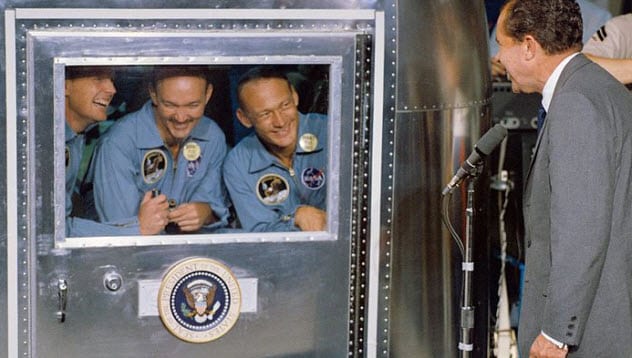
Today, astronauts leave their spacecraft and mix with people immediately after landing. This was not so at the time of Apollo 11. After their mission to the Moon, the Apollo 11 astronauts were quarantined for three weeks before they were allowed to mingle with other people.
This was a precautionary measure. NASA was unsure whether the Moon contained deadly microorganisms. So it recommended that the astronauts be quarantined, that Moon samples and spacesuits (among other things) be examined for microorganisms, and that the crew be monitored for new infections.
The crews of Apollo 12 and 14 were also quarantined. However, NASA stopped doing that by the time Apollo 15 landed because it had already been confirmed that the Moon was sterile in the areas explored.[10]
Read more crazy, little-known facts about the Moon landings on 10 Masonic Ritual Connections To The Apollo 11 Moon Landing and Top 10 Facts About The Apollo Mission That NASA Wanted To Keep Secret.

